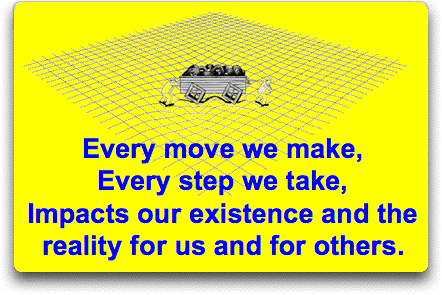Experiential exercises have significant impacts on individual and organizational learning. Participating and practicing is 15 times more impactful than sitting in a classroom, based on a good bit of research. Being involved and engaged is, well, being involved and engaged. The visual, auditory and kinesthetic anchors for memory are all hooked up and operating.
Motorola University in 1996 published an interesting chart that I reproduce here not knowing how to get permission for use:
Me, I would have built it upside down, so that Teaching Others was at the top. But that is MY learning and memory preference showing up, I guess.
Learning, linking and understanding are neurologically determined — the brain is what controls the process and it is good that it is semi-automatic since if it required much thinking or typing, not a lot of us would ever get it! Our brain uses chemical and physical changes in proteins and membranes to build the electrical circuits that make all this “living large” stuff possible. It works pretty seamlessly, and when it doesn’t, we all realize the consequences (Alzheimer’s, dementia, coma, and the like).
What our brain does is encode our experiences. If there is some boring lecture going on, guess what is probably not going to be recalled? If you are energetically participating in some challenge, doesn’t it make sense that more things will be remembered? Knowing that something might be useful later adds a personal touch — helping someone hang a backpacking hammock works quite well when you know that you will be hanging your hammock the next day. Learning to start a fire with fire sticks or a flint striker is remembered when you know you will head off on a survival venture that afternoon.
It is about storage and retrieval. It is about encoding and categorizing and accessing the meaningful information later.
In some of my deliveries, the group might have been through a course or a series of lectures on something or other. Let’s say that the subject is Project Management and the participants are shown a methodology for gathering information prior to planning a program. When we play The Search for The Lost Dutchman’s Gold Mine, the funny thing is that these skills are often NOT transferred to the information gathering required to produce high levels of game performance.
So, in the debriefing, we review the choices made, generate discussions as to how the tools could be used, and then often project future scenarios or even do some problem solving whereby those tools are used. This kind of process generates a motivation to learn and the kind of VAK needed to anchor the skills in place. We also encourage a diversity of ideas and reinforce differences in thinking styles, since these generate better options so often. The debriefings often focus on divergent thinking and questioning ideas.
Most people in most organizations are not observed to actually apply things they learned into workplace performance change and improvement. This is a pretty common problem with classroom training — people KNOW how to do things but choose to keep doing them as they did before. Implementing change without changing feedback and measurement systems is pretty hard. Coaching can work, but coaches are often not available immediately after training has occurred.
What we suggest is a game activity to involve and engage people, one that sets up a solid discussion of behavioral choices made along with thinking about possibilities. That activity might include projection, team-based agreement on desired future behaviors, some discussions about how improvements might be measured, personal commitment to doing things differently combined with some level of followup and coaching, and other things to help to anchor in the learning as well as generate new, sustainable behaviors in the future.
Generally, people remember their own behavior, and they tend to remember their mistakes and bad choices a bit more easily than all their good reactions and responses. In Dutchman, we try to generate energy and emotion in our activities by adding pressures of time and scarcity of resources or some level of competition. Ideally the competitive situation has a balance of collaboration and cooperation built in.
If organizations can better use these kinds of engaging activities, they can expect more learning to occur and more commitment to change to result.
Some ideas:
 Dr. Scott Simmerman is a designer of team building games and organization improvement tools. Managing Partner of Performance Management Company since 1984, he is an experienced presenter and consultant.
Dr. Scott Simmerman is a designer of team building games and organization improvement tools. Managing Partner of Performance Management Company since 1984, he is an experienced presenter and consultant.
Connect with Scott on Google+ – you can reach Scott at scott@squarewheels.com
<a rel=”author” href=”https://plus.google.com/u/0/114758253812293832123″ a>



























